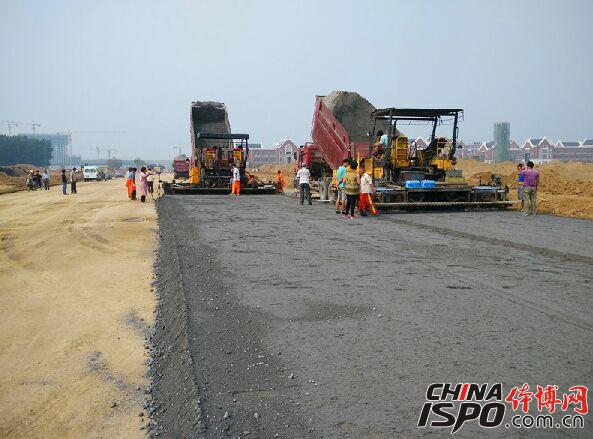How is the paving and compaction of limestone base layer performed?
After limestone soil is mixed, it must be paved and compacted. There are two essential tasks to perform during the paving process. First, the moisture content should be controlled within the optimal range. One common method for checking this is the oven-drying method, which measures the water content. Another empirical approach involves taking a handful of lime soil: if it forms a clump when squeezed and leaves no water mark, and when dropped from 50 cm falls into small pieces, or from 100 cm lands in a loose state, it indicates that the moisture content is suitable.
The second task is to control the virtual thickness of the layer being laid. If the virtual thickness is not properly managed, it can lead to difficulties in trimming after compaction, resulting in uneven heights. The virtual thickness is typically 1.6 to 1.8 times the actual structure thickness, and can be manually leveled before rolling. The table below shows the typical paving thicknesses for lime soil:
Once the lime soil is laid, it's important to double-check the design elevation and slope. After laying, the following steps should be followed:
**First Step – Voltage Regulation**: This step is the final check before compaction and is crucial for ensuring proper compaction. It helps identify internal issues, layer thickness, and elevation discrepancies. Voltage regulation is typically done using a 6–8 ton light steel roller or a crawler tractor. The process starts from low points and moves to high areas, at a slow speed. After two passes, stop and check for elevation, slope, thickness, and surface conditions like cracks, peeling, or dryness. Any issues found should be addressed immediately, and the area should be leveled before proceeding with rolling.
**Second Step – Regrind and Compaction**: After initial voltage regulation and inspection, regrinding is performed using a 12-ton steel wheel roller. Start from low points and roll at a speed of 60–70 meters per minute for 4–6 passes, overlapping the rear wheel by 1/2 to 1/3 each time.
**Third Step – Final Inspection and Trimming**: After compaction, a project inspection is conducted for compaction, flatness, and other critical factors. High areas can be trimmed with a leveling machine, while low areas should be planed 8–10 cm deep, then mixed with fresh lime soil and leveled again. A manual tamping and rolling process follows, usually repeated 4–6 times.
Finally, after rolling, the lime soil base should be watered and cured for at least 7 days to ensure proper strength development.

Lime Soil Paving Thickness
Thickness |
15(cm) |
20(cm) |
||||
Paving Thickness Mix ratio |
Soil thickness (cm) |
Lime thickness (cm) |
Soil thickness (cm) |
Lime thickness (cm) |
||
10% Lime Soil |
15~16 |
22~24 |
5 |
20~21 |
30~32 |
7 |
12% Lime Soil |
15~16 |
22~24 |
6 |
20~21 |
30~32 |
8 |
14% Lime Soil |
15~16 |
21~23 |
7.8 |
20~21 |
28~31 |
10.5 |
Accessories For The Back Of The Restaurant,Commercial Hot Pot Restaurant Accessories,Commercial Barbecue Restaurant Accessories,Vegetable Racks
Foshan Shunde Oubao Luo Intelligent Catering Equipment Co., Ltd. , https://www.aobl-ch.com